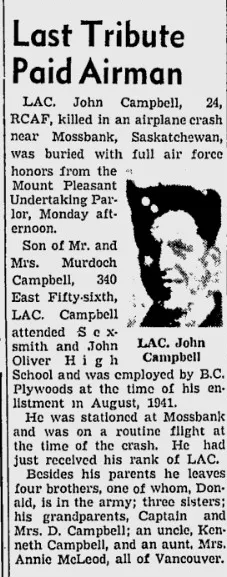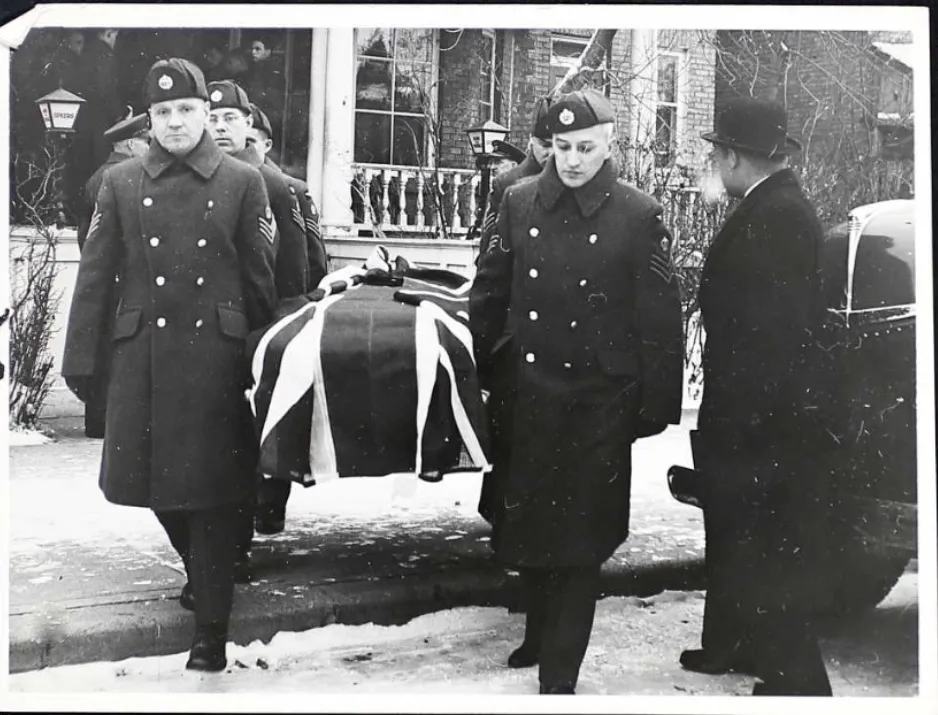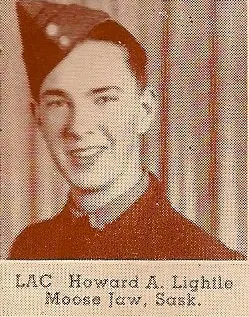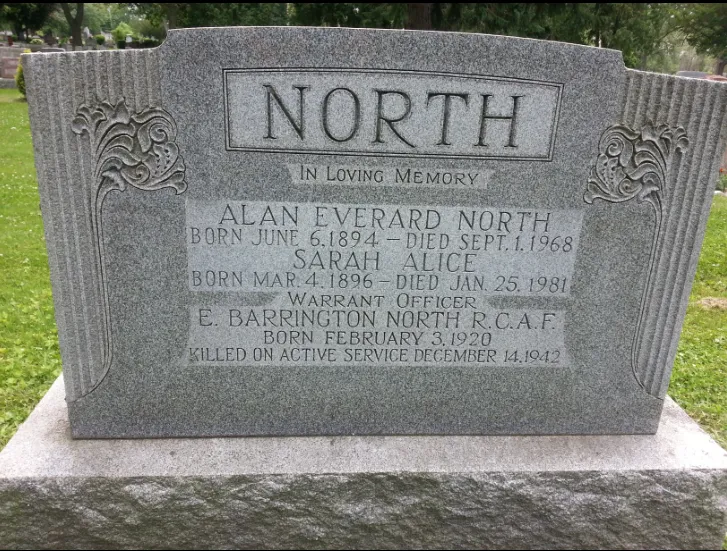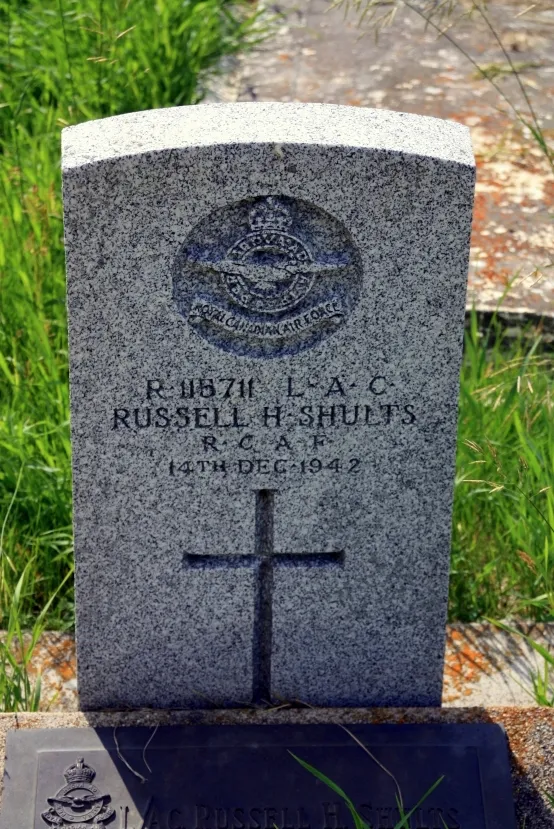Pratt, Henry Vernon (Aircraftman 1st Class)
Killed in Flying Accident 1942-December-14
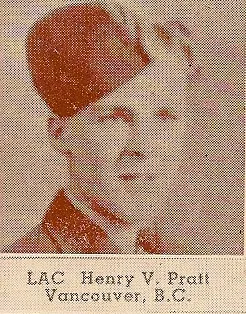

Birth Date: 1919-December-18
Born: Fort Langley, British Columbia
Parents: Son of Henry Harvey Pratt and Ann Harcourt, of Vancouver.<p></p>
Spouse:
Home: Vancouver, British Columbia
Enlistment: Vancouver, British Columbia
Enlistment Date: 1941-November-13
Service
RCAF
Unit
2 BGS- Bombing & Gunnery School
Base
Mossbank, Saskatchewan, Canada
Rank
Aircraftman 1st Class
Position
aero engine mechanic
Service Numbers
R/138493
Crew or Other Personnel
Bolingbroke 9984
Accident Card - Bristol Bolingbroke Mk. IVT serial:9984
This accident involved 1 aircraft on 1942-December-14. Bolingbroke IVT s/n 9984.
This accident involved 6 people. Campbell J, Habkirk RE, Lightle HA, North EB, Pratt HV, Shults RH
This accident had 6 fatalities. Leading Aircraftman Russell Herman Shults RCAF Killed in Flying Accident service no:R/115711 Bolingbroke 9984, Aircraftman 1st Class Henry Vernon Pratt RCAF Killed in Flying Accident service no:R/138493 Bolingbroke 9984, Warrant Officer 2nd Class Everard Barrington North RCAF Killed in Flying Accident service no:R/64239 Bolingbroke 9984, Leading Aircraftman Robert Edwin Habkirk RCAF Killed in Flying Accident service no:R/115747 Bolingbroke 9984, Leading Aircraftman John Campbell RCAF Killed in Flying Accident service no:R/143117 Bolingbroke 9984, Leading Aircraftman Howard Austin Lightle RCAF Killed in Flying Accident service no:R/114616 Bolingbroke 9984
Bolingbroke serial: 9984
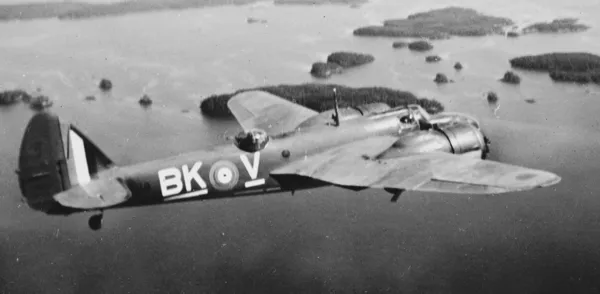
Fairchild Bolingbroke Mk. IV, RCAF (Serial No. 9118), coded BK-V, No. 115 (Bomber Reconnaissance) Squadron, Patricia Bay, British Columbia, 1942.
The Bristol Fairchild Bolingbroke was a maritime patrol aircraft and trainer used by the Royal Canadian Air Force during the Second World War. Built by Fairchild-Canada, it was a license-built version of the Bristol Blenheim Mk IV bomber.
In 1935, the British Air Ministry issued Specification G.24/35 to procure a coastal reconnaissance/light bomber to replace the Avro Anson. Bristol proposed the Type 149, based on its Blenheim Mk I, with Bristol Aquila engines to give greater range. While the Air Ministry rejected this proposal, a Blenheim Mk I, retaining its Mercury VIII engines, was converted as a Type 149 (Blenheim Mk III) for the general reconnaissance role.The nose was lengthened to provide more room for the bombardier, with the upper left surface of the nose being scooped out to maintain pilot visibility during takeoff and landing.
The longer range also fulfilled a Canadian requirement for a maritime patrol aircraft. Consequently, Fairchild Aircraft Ltd. (Canada) of Quebec started production of the Blenheim Mk IV as the Bolingbroke (the originally intended name for the Blenheim IV). This type was nicknamed the "Bolly". After a small run of aircraft constructed to British specifications, as the Bolingbroke Mk I, Fairchild switched production to the Bolingbroke Mk IV with Canadian and American instruments and equipment. These versions also included anti-icing boots and a dinghy. One of the early Mk IV variants was the Bolingbroke Mk IVW which was powered by two 825 hp (615 kW) Pratt & Whitney SB4G Twin Wasp Junior engines. Incapable of maintaining altitude on one engine, the normal bomb load was reduced to 500 pounds on these aircraft to compensate for the low engine power. The most-produced variant was the Bolingbroke Mk IVT trainer, of which 457 were completed. A total of 626 Bolingbrokes were produced. Wikipedia
Aircraft Images
Bolingbroke 9984
Bolingbroke Mk. IVT 9984
Assigned to No. 2 B&GS in Mossbank, SK. On 14 Dec 1942, the a/c crashed into a hillside during an air-test; all six on board killed; these included Warrant Officer Class 2 E. North (pilot) together with five ground-crew passengers: LACs R. Habkirk, H. Lightle, R. Shults and J. Campbell, along with AC1 H. Pratt.1942-10-02 Taken on Strength 2022-01-02
1942-December-14 Accident: 2 Bomb & Gunnery School Loc: Lumsden Saskatchewan Names: Campbell | Habkirk | Lightle | North | Pratt | Shults
1943-04-07 Struck off Strength Cat “A†write-off; reduced to spares and produce 2022-01-02
Unit Desciption
2 BGS (2 Bomb and Gunnery School)
The Bombing and Gunnery School (B&GS) offered instruction in the techniques of bomb aiming and aerial machine gunnery to Air Observers, Bomb Aimers, and Wireless Air Gunners. These schools required large areas to accommodate their bombing and gunnery ranges, and were often located near water. The Avro Anson, Fairey Battle, Bristol Bolingbroke, and Westland Lysander were the standard aircraft used at B&GS schools.
RCAF.info - RCAF Station Mossbank Saskatchewan
![]() Vintage Wings - Ghosts Of Saskatchewan
Vintage Wings - Ghosts Of Saskatchewan
![]() Saskatchewan Virtual War Memorial
Saskatchewan Virtual War Memorial
![]() Commonwealth Air Training Plan Museum - 150 Project
Commonwealth Air Training Plan Museum - 150 Project
![]() The JN Dog Boys - 2 Bombing & Gunnery School History
The JN Dog Boys - 2 Bombing & Gunnery School History
